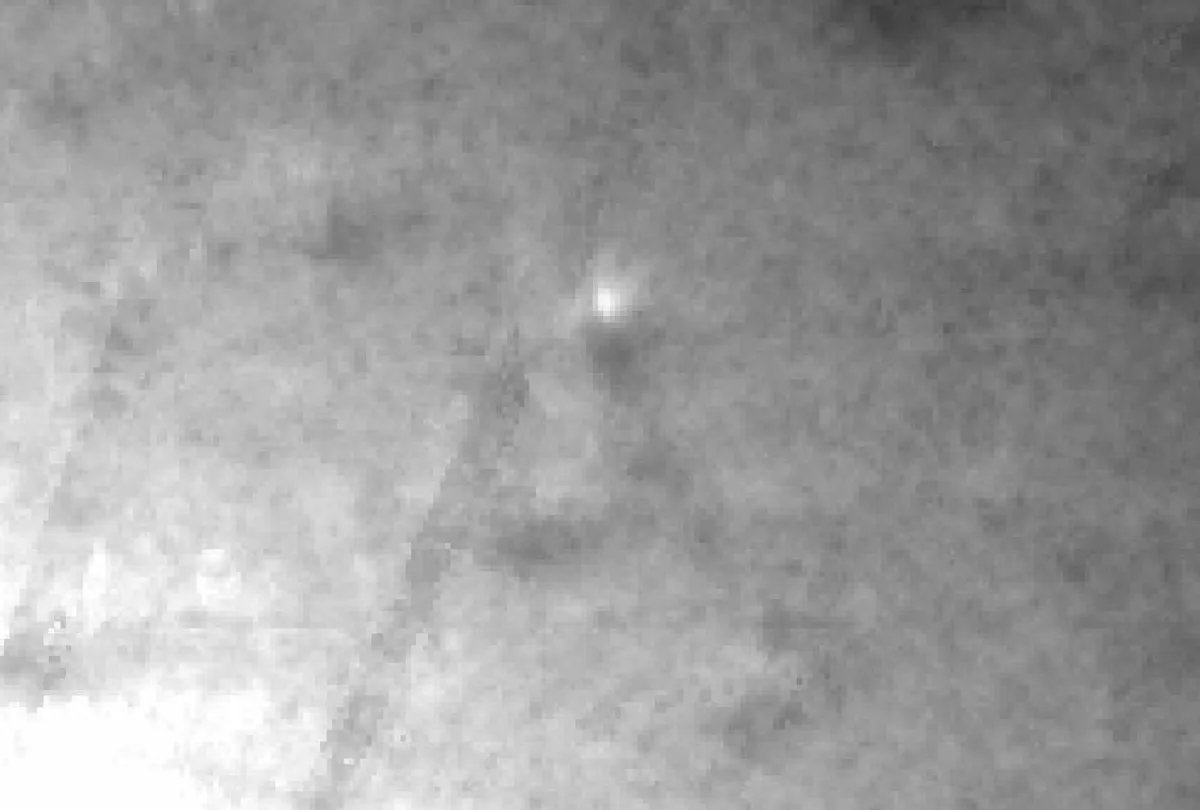
As of its perihelion date, 3I/ATLAS has provided the first evidence of a non-gravitational acceleration. This significant finding was documented by Davide Farnoccia, a navigation engineer at NASA's Jet Propulsion Laboratory in Pasadena. Farnoccia, who holds a PhD in Mathematics from the Galileo Galilei School of Graduate Studies at the University of Pisa in Italy, has shed light on this intriguing phenomenon.
The non-gravitational acceleration of 3I/ATLAS was recorded at a perihelion distance of 1.36 times the Earth-Sun separation, which is equivalent to 203 million kilometers. This acceleration comprises two key components in the orbital plane of the comet:
Radial acceleration: Measured at 135 kilometers per day squared, moving away from the Sun. Transverse acceleration: At 60 kilometers per day squared, relative to the Sun's direction.These measurements suggest that if 3I/ATLAS is propelled by the rocket effect of ejected gas, it would experience momentum conservation, implying a significant mass loss over time. Specifically, a thermal ejection speed of several hundred meters per second would result in an evaporation half-life of approximately six months for 3I/ATLAS.
This mass loss is particularly noteworthy; over the month it takes for 3I/ATLAS to traverse a distance comparable to its perihelion separation from the Sun, it is expected to lose about a tenth of its mass. This substantial loss should manifest as a large plume of gas surrounding the comet, observable in the coming months of November and December 2025.
ESA's Juice spacecraft is set to be the first to detect this mass loss in early November. Furthermore, on December 19, 2025, 3I/ATLAS will make its closest approach to Earth, at a mere 269 million kilometers away. This event will present an unparalleled opportunity for hundreds of ground-based telescopes, alongside the Hubble and Webb space telescopes, to observe the comet closely.
The recent observational data suggests that 3I/ATLAS might have undergone significant evaporation, which could explain its unusual brightening. A new paper highlights findings from the STEREO, SOHO, and GOES-19 instruments during September and October 2025, indicating a rapid increase in brightness inversely correlated with its distance from the Sun, scaling to the power of -7.5 (±1).
Alternatively, the non-gravitational acceleration might hint at a technological signature from an internal engine. This theory could also clarify reports of 3I/ATLAS exhibiting a bluer hue than that of the Sun. Such a color is unexpected for a natural comet, as dust typically reddens scattered sunlight. Given that the surface temperature of 3I/ATLAS is estimated to be around 20 times colder than the Sun's photosphere, a blue appearance at perihelion is an anomaly worth investigating.
This blue hue constitutes the ninth listed anomaly concerning 3I/ATLAS, which could potentially be attributed to a hot engine or an artificial light source. The reported level of non-gravitational acceleration corresponds to a modest spatial deviation over a month, insufficient to significantly alter 3I/ATLAS's original gravitational path within the Solar System.
In a related anecdote, I recently led a luncheon at Harvard’s Institute for Theory and Computation, where over a hundred astrophysicists gathered. The event featured presentations on the latest advancements in astrophysics, one of which discussed the current expansion rate of the Universe compared to expectations derived from the cosmic microwave background. This discrepancy poses challenges for theoretical models, highlighting the importance of not dismissing data simply because it does not fit existing theories.
This principle also applies to the anomalies observed in 3I/ATLAS. As researchers continue to unravel the mysteries surrounding this comet, the ongoing observations will help clarify whether the observed phenomena are due to natural processes or something more extraordinary.
Stay tuned for more updates on 3I/ATLAS as we approach its closest encounter with Earth and explore the implications of its intriguing behaviors.